Sony Cybershot DSC-H2 Review
Review Date: September 11th 2006
Author: Gavin Stoker
Leave a comment about this Review
|
Image Quality
All of the sample images in this review were taken using the 6M Fine mode, which gives an average image size of around 2.5Mb.
Noise
There are 6 ISO settings available on the Sony Cybershot DSC-H2 which you can select at any time if the camera is in the creative shooting modes. Here are some 100% crops which show the noise levels for each ISO setting:
ISO 80 (100% crop) |
ISO 100 (100% crop) |
 |
 |
ISO 200 (100% crop) |
ISO 400 (100% crop) |
 |
 |
ISO 800 (100% crop) |
ISO 1000 (100% crop) |
 |
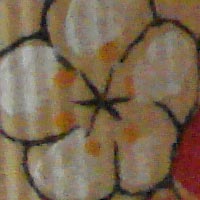 |
There is no discernible noise at the slowest settings of ISO 80 and 100, and ISO 200 is also pretty clean. Noise is apparent at ISO 400 but it's still usable. The fastest settings of ISO 800 and 1000 show obvious levels of noise.
Sharpening
Here are two 100% crops which have been Saved as Web - Quality 50 in Photoshop. The right-hand image has had some sharpening applied in Photoshop. The out-of-the camera images are soft at the default sharpening setting and benefit from some further sharpening in a program like Adobe Photoshop. Alternatively you can increase the in-camera sharpening level.
Original
100% Crop |
Sharpened 100% Crop |
 |
 |
 |
 |
Chromatic Aberrations
The Sony Cybershot DSC-H2 handled chromatic aberrations very well, with only very limited purple fringing in areas of high contrast, as shown in the example below.
| Example
1 |
Example
1 |
 |
 |
Macro
The Sony Cybershot DSC-H2 offers a Macro setting that allows you to focus on a subject that is 2cms away from the camera. The first image shows how close you can get to the subject in Macro mode (in this case a compact flash card). The second image is a 100% crop.
| Macro Shot |
100% Crop |
 |
 |
Flash
The flash settings on the Sony Cybershot DSC-H2 are Auto, Daylight, Cloudy, Fluorescent, Incandescent, Flash and One push. These shots of a white coloured wall were taken at a distance of 1.5m.
| Flash Off - Wide Angle (36mm) |
Auto Flash - Wide Angle (36mm) |
 |
 |
| Flash Off - Telephoto (432mm) |
Auto Flash - Telephoto (432mm) |
 |
 |
And here are some self-portraits. As you can see, neither the Flash On or the Red-Eye Reduction option caused any red-eye, although there is a small purple area present in both shots
| Flash Off |
Flash Off (100% Crop) |
 |
 |
| Flash On |
Flash On (100% Crop) |
 |
 |
Night Shot
The Sony Cybershot DSC-H2 maximum shutter speed is 30 seconds, which is excellent news if you're seriously interested in night photography. The shot below was taken using a shutter speed of 2 seconds, aperture of f/2.8 at ISO 80. I've included a 100% crop of the image to show what the quality is like.
| Night Shot |
100% Crop |
 |
 |
Image Stablization
The Sony Cybershot DSC-H2 has an optical image stabilization system, which allows you to take sharp photos at slower shutter speeds than other digital cameras. To test this, I took a handheld shot of the same subject with the ISO speed set to 80. The first shot was taken at the widest focal length, the second at the longest focal length, both from the same standing position. Here is a 100% crop of the image to show the results.
| Wide-Angle (36mm) |
100% Crop |
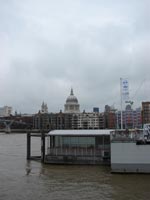 |
 |
| Telephoto (432mm) 1/400 sec at f/4 |
100% Crop |
 |
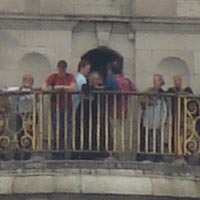 |
| Wide-Angle (36mm) |
100% Crop |
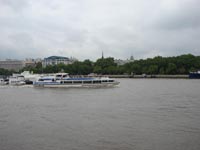 |
 |
| Telephoto (432mm) 1/800 sec at f/4 |
100% Crop |
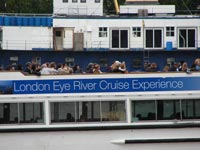 |
 |
As you can see, with anti shake turned on, the image issharp at both wide-angle and telephoto settings. This feature really does seem to make a difference and could mean capturing a successful, sharp shot or missing the opportunity altogether.
Overall Image Quality
While the level of detail captured by the Sony Cybershot DSC-H2 isn't comparable to that of a budget DSLR with quality optics, thanks to a quality Carl Zeiss lens it is still reasonably sharp. Left to the default setting of 'normal', colours are more vivid that those produced by competing super zooms (apart from, in my opinion, Kodak's EasyShare P880), with reds, greens and blues particularly retina-searing. However, under bright conditions some highlight detail is lost. It's fairest to describe the Super SteadyShot function as providing the possibility for a greater number of usable shots that would be achievable without; inevitably you'll still get the occasional blurred image, especially at maximum telephoto. The zoom range however, is especially great for candid portraiture. Under closer scrutiny, there is some evidence of fringing between areas of high contrast, a problem that appears to be inherent across the Cybershot range, and is not unexpected at this level. Neither is the fact that shooting above ISO 400 gradually introduces more image noise. Again though, such 'defects' are less intrusive than found elsewhere, due in part to the Sony Cybershot DSC-H2's Clear RAW NR algorithm boosting signal to noise ratio. Although not a flawless performance, the Sony Cybershot DSC-H2 delivers results that are more than acceptable and won't noticeably deteriorate if printed film-poster sized.
|
![]() PhotographyBLOG
is a member of the DIWA
organisation. Our test results for the Sony Cybershot DSC-H2
have been submitted to DIWA
for comparison with test results for different samples of
the same camera model supplied by other DIWA
member sites.
PhotographyBLOG
is a member of the DIWA
organisation. Our test results for the Sony Cybershot DSC-H2
have been submitted to DIWA
for comparison with test results for different samples of
the same camera model supplied by other DIWA
member sites.
